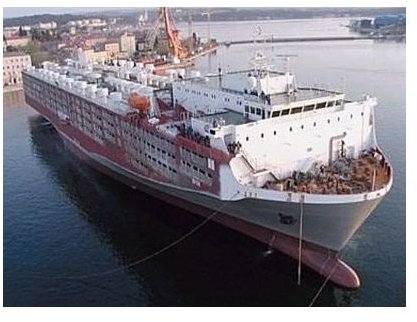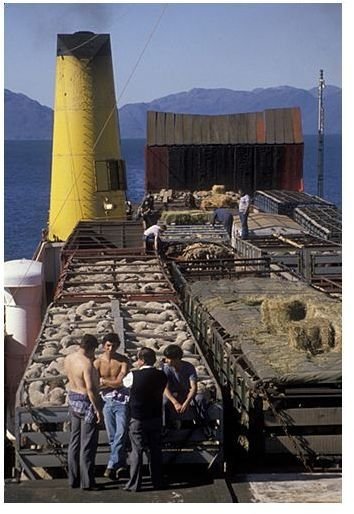Different types of sailing ships: What are Livestock Carriers
Introduction
Livestock Carrier is a special type of ship particularly made for transportation of animals, specifically livestock such as cows, sheep, goats etc. Livestock carriers are nothing but container carriers modified in their design and construction, in order to carry animals. All the import and exports of animals are done strictly in accordance with international legislation. Cattle and sheep are the two main types of animals that are transported in millions, around the world. Other then that, horses, deers, camels and few types of birds are also transported. There are specific carriers that carry live fish for fish farming purpose.
The size of these carriers varies, according to the type of livestock and market demand. Generally, they fall in the range of 2000 to 2500 Dead Weight Tonnage. Also, the number of crew members on livestock carrier are more than that on any other carrier. Experienced stock men are hired in order to look after the livestock. The number of stock men on board a ship depends on the number of livestock pens and the kind of automation provided on ship.
In short, extra care is needed for transporting livestock. This doesn’t mean just human assistance but also the design and ambient environment on the ship.
Also, the construction of the ship is slender in order to prevent rolling and pitching. This helps to prevent animals from breaking their legs when the ship experiences excessive movement.
Types of Livestock Carriers
Unlike passenger ships which are designed to carry human beings in the most luxurious manner possible, livestock carriers carry animals who have to be taken care of in a thorough manner. One thing of utmost importance on a livestock carrier is, ventilation. As livestock tend to make the surrounding dirty, ventilation is a key factor for a healthy and hygienic transportation of live animals. On this basis, the carriers are divided into two main types:
- Open Livestock carriers
- Closed Livestock carriers
Open Livestock Carriers
Open livestock carriers are also known as open ventilation carriers as the animal pens are located on the deck and thus there is no need for mechanical ventilation system throughout the ship.
Animal pens, if not ventilated properly, tend to develop toxic gases that can lead to extensive asphyxiation of animals. These toxic gases can reduce the oxygen level drastically, resulting in life threatning conditions.
Sometimes Natural ventilation is not sufficient as the wind condition at sea keeps on changing. Thus a mechanical ventilation system is imperative at the critical areas where the ventilation becomes difficult.
Closed Livestock Carrier
In this type of carrier, animal pens are located in the holds inside the ship. Mechanical ventilation systems are provided with emergency backups. The plus point of this type is that the livestock are not affected by adverse weather conditions. A controlled environment provides better conditions for feeding and watering the livestock. Emergency power system is utmost important in addition to emergency fire fighting systems.
Specific ventilation standards should be maintained in accordance with those stated in the regulations in order to provide a comfortable environmental condition for animals.

Automation on livestock carriers
Nowadays all the livestock carriers are provided with automated livestock feeding mechanism. All the pens in the holds are connected to the main silos with fodder located at the main or lower deck. The feed is moved mechanically from the silos to the holds where it is distributed to the animals with the help of wheel barrows. The manure from the holds is disposed overboard with the help of conveyor belts and lifts.
An automated HVAC system does 45 air changes per hour. The internal environment and airflow is automatically controlled with the help of an extensive automated system.
References
Ship Knowledge - A Mordern Encyclopedia by K. Van Dokkum
Australian Maritime Safety Authority. Marine Orders. Livestock
Image Credits
https://www.geocities.com/uksteve.geo/livestock1.jpg
https://farm3.static.flickr.com/2189/2207749910_893e1071e7.jpg
